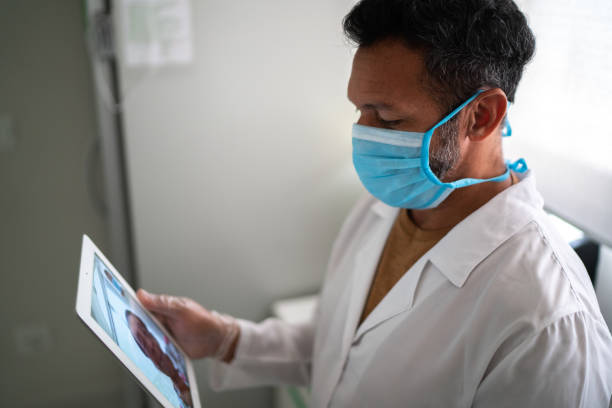Revolutionizing Critical Care: Advanced Patient Monitoring
In the dynamic landscape of critical care, patient monitoring solutions stand as indispensable tools, empowering healthcare providers to deliver optimal care. From intensive care units to emergency departments, these advanced systems play a pivotal role in monitoring patients' vital signs, detecting early signs of deterioration, and facilitating timely interventions. In this comprehensive guide, we delve into the transformative impact of patient monitoring solutions on critical care delivery.

Evolution of Patient Monitoring in Critical Care
Traditional Approaches: From Manual Monitoring to Automated Systems
The history of patient monitoring in critical care traces back to manual methods of vital sign assessment, relying on intermittent checks by healthcare professionals. However, as technology progressed, automated monitoring systems emerged, revolutionizing the way patient data is collected and analyzed. These systems not only provide real-time monitoring but also offer advanced functionalities for predictive analytics and decision support.
Integration of Multimodal Monitoring Technologies
In modern critical care settings, the integration of multimodal monitoring technologies has become commonplace. From hemodynamic monitoring to neurologic assessment, these multimodal systems offer a comprehensive view of patients' physiological status, allowing clinicians to make informed decisions based on a holistic understanding of their condition. This integration fosters a multidisciplinary approach to patient care, promoting collaboration among different specialties.
Advantages of Advanced Patient Monitoring Solutions
Early Detection of Critical Events
One of the primary benefits of advanced patient monitoring solutions is their ability to facilitate early detection of critical events. By continuously monitoring vital signs, trends, and physiological parameters, these systems can alert healthcare providers to subtle changes indicative of impending deterioration. This early warning mechanism enables prompt intervention, potentially preventing adverse outcomes and improving patient survival rates.
Personalized Treatment Strategies
Advanced patient monitoring solutions empower clinicians to develop personalized treatment strategies tailored to individual patient needs. By analyzing real-time data and historical trends, healthcare providers can identify patterns, predict clinical trajectories, and adjust interventions accordingly. This personalized approach not only optimizes patient outcomes but also enhances resource utilization and efficiency in critical care settings.
Cutting-edge Features and Functionalities
Remote Monitoring and Telemedicine Integration
In an era characterized by technological advancement, remote monitoring and telemedicine integration have emerged as game-changers in critical care. These capabilities enable healthcare providers to remotely monitor patients' vital signs, receive alerts for critical events, and even conduct virtual consultations in real-time. This paradigm shift not only expands access to specialized care but also reduces the burden on healthcare infrastructure.
Artificial Intelligence and Predictive Analytics
Artificial intelligence (AI) and predictive analytics hold immense promise in augmenting patient monitoring in critical care settings. By leveraging AI algorithms, healthcare providers can analyze vast amounts of patient data, identify subtle patterns, and predict clinical outcomes with unprecedented accuracy. These predictive analytics empower clinicians to anticipate complications, intervene proactively, and optimize patient management strategies.
Future Directions and Innovations
Wearable Monitoring Devices and Ambient Intelligence
The future of patient monitoring in critical care is poised to embrace wearable devices and ambient intelligence technologies. These innovations enable continuous monitoring of patients' vital signs in real-time, even outside traditional healthcare settings. By seamlessly integrating into patients' daily lives, wearable monitoring devices offer unprecedented convenience and autonomy while ensuring continuous surveillance of critical parameters.
Blockchain Technology for Secure Data Management
Blockchain technology holds immense potential in revolutionizing data management in critical care settings. By leveraging blockchain's decentralized ledger system, healthcare providers can ensure the integrity, security, and privacy of patient data collected through monitoring solutions. This secure data management framework not only enhances compliance with regulatory requirements but also fosters trust and transparency in healthcare operations.
Conclusion:
In conclusion, advanced patient monitoring solutions represent a cornerstone of modern critical care, empowering healthcare providers to deliver high-quality, personalized care to patients in need. From early detection of critical events to predictive analytics and remote monitoring capabilities, these innovations have revolutionized the way critical care is delivered. As technology continues to evolve, the future promises even greater advancements, ushering in a new era of patient-centric critical care delivery.



Comments
Post a Comment